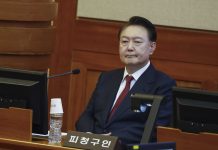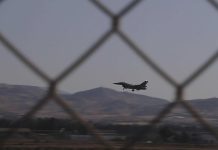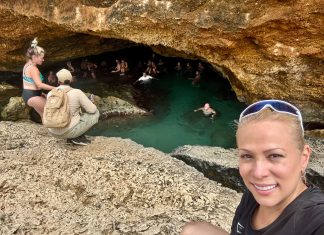
Russian Prime Minister Dmitry Medvedev arrives Thursday in Cuba, which was long the former Soviet Union’s principal ally in Latin America. The visit is seen by some as confirmation of a new closeness at a time when the island is going through a new economic crisis while under new pressure from the United States.
Here’s a look at the visit and changes in their relations:
___
WHAT IS EXPECTED OF THE VISIT?
Cubans are looking for the two-day visit to bring accords that will benefit the island’s oil and transportation sectors, two areas hit hardest by the current crisis.
A statement from the Russian government this week signaled that the countries will sign accords and commercial agreements, though no specifics were given. Russia is one of Cuba’s most important trade partners, after Venezuela, China, Spain and Canada.
Medvedev, who is making his third trip to Cuba, is scheduled to meet with Cuban President Miguel Díaz-Canel, tour an energy project on the outskirts of the capital and see restoration work on Havana’s emblematic capitol, whose golden dome came thanks to a donation from Moscow.
___
IN WHAT CONTEXT IS THE TRIP COMING?
Although it was scheduled well beforehand, Medvedev’s arrival coincides with a toughening of U.S. sanctions on Cuba. One recent measure was the creation of a blacklist of shipping companies to punish those that deliver petroleum.
Cuba produces about 42,000 barrels of oil a day, but it has a daily deficit of 62,000 barrels that is filled primarily by Venezuela, also a close partner of Russia.
Shortages have since mid-September provoked long lines at gas stations, problems with public transportation and increased use of animal-powered vehicles. There have also been prolonged shortages of food and other goods.
Washington’s stated objective is to suffocate the island economically, pressuring for a change to Cuba’s political system and, in addition, sap Venezuela’s socialist government of an ally.
___
WHAT IS THEIR TRADE RELATIONSHIP?
Trade between the two countries is expected to reach $500 million in 2019, Russian Vice Prime Minister Yury Borisov said in September.
At that time, it was announced that both governments would sign a “roadmap to modernize the energy system” of Cuba. Among the plans, apparently, was a contract through which Cuba would reduce by a third its purchases of petroleum supplies from abroad, the Sputnik news agency reported. There was also talk of an agreement involving three island thermoelectric plants.
Another area for Russian participation is agriculture, a Cuban sector that was a pillar of trade with the Soviet Union in the 1970s and 1980s. The island needs to import machinery for irrigation and harvesting as well as heavy equipment and supplies.
In September, the first Cuban-Russian mixed company was formed for the manufacture of construction materials, to be located in the Mariel special commercial zone west of Havana.
Andrei Slepniov, director of the Russia Export Center, told Sputnik on Wednesday that other projects under study include modernizing Cuba’s state rail company and maintaining the fleet of Russian airliners flown by Cubana de Aviacion.
___
HOW HAVE RELATIONS GONE BETWEEN HAVANA AND MOSCOW?
When the United States imposed its embargo on Cuba in the 1960s, the Caribbean nation strengthened its alliance with the Soviet Union, which deepened further when the island’s government proclaimed itself communist.
Cuba obtained all manner of goods through preferential accords, from heavy machinery and textiles to petroleum and vehicles. In exchange, the island provided sugar. Thousands of Cuban professionals were educated in the Soviet Union. It’s still common to run across islanders who speak Russian and see Lada and Moskvich cars rumbling through the streets.
After the fall of the Soviet Union in the 1990s, though, the help from Moscow vanished and Cuba entered a deep crisis. The distancing was radical and left a debt of $35 million that Cuba refused to recognize, arguing that the Soviet Union no longer existed.
In recent years, contacts and commercial ties were re-established. In 2014, President Vladimir Putin forgave 90% of Cuba’s unpaid debt and converted the rest to financing for Russian exports to the island.q
















